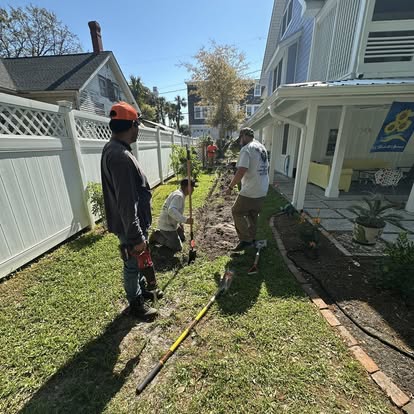
Harnessing Coastal Climate for Optimal Irrigation Strategies Sep 02, 2025
The coast is characterized by its salty atmosphere, consistent moisture, and often sandy soils, which can pose difficulties for maintaining a healthy landscape. However, when harnessed correctly, these factors can enhance irrigation strategies. The key lies in understanding how to turn these environmental peculiarities into advantages.
The first step in creating an optimal irrigation strategy for coastal climates is conducting a thorough site assessment. This includes analyzing the soil composition, understanding local weather patterns, and considering the types of vegetation that naturally thrive in these conditions. By understanding these factors, Coastal Irrigation & Drainage can tailor a system that works in harmony with the natural environment, rather than against it.
One effective approach is leveraging the natural moisture present in the coastal air. This can reduce overall water usage, as plants in such climates often require less supplemental water than in drier inland areas. Smart irrigation technologies, such as weather-based controllers, can automatically adjust watering schedules based on real-time environmental conditions, ensuring that your landscape receives just the right amount of water. This not only conserves water but also reduces the likelihood of over-watering, which can be detrimental to plant health.
Another consideration is the impact of salt air on plant life. Salt can accumulate in the soil, which may restrict plant growth and lead to nutrient deficiencies. Choosing salt-tolerant plant species and incorporating proper soil amendments can mitigate these issues. Coastal Irrigation & Drainage experts recommend regular soil testing to monitor salinity levels and make necessary adjustments to your irrigation strategy. Incorporating organic matter into the soil can improve its structure and help maintain the right balance of nutrients.
Drip irrigation systems are particularly effective in coastal regions due to their precise delivery of water directly to the root zone. This method minimizes water evaporation and ensures efficient use, making it an ideal choice for conserving resources and promoting plant health. By adjusting the emitters and lines, a drip irrigation system can be customized to meet the specific needs of different areas within a landscape.
Implementing rainwater collection systems can further enhance water conservation efforts. Given the typically higher rainfall along coastal areas, collecting rainwater can provide a sustainable source of irrigation. Utilizing storage tanks and delivery systems can help maximize the use of this natural resource, reducing reliance on municipal water supplies and lowering costs over time.
In conclusion, while coastal climates present unique challenges for irrigation, they also offer opportunities to create sustainable, efficient, and effective systems. By leveraging the natural conditions and adopting smart irrigation technologies, Coastal Irrigation & Drainage ensures that your landscape thrives. Understanding and respecting the local environment leads to more resilient landscapes that contribute to the ecology of the coastal region. With the right strategies, you can turn potential challenges into opportunities for growth and sustainability, ensuring a lush and vibrant landscape year-round.
/filters:no_upscale()/filters:format(webp)/media/6842295f-caed-4647-94f2-d2375c215306.jpeg)